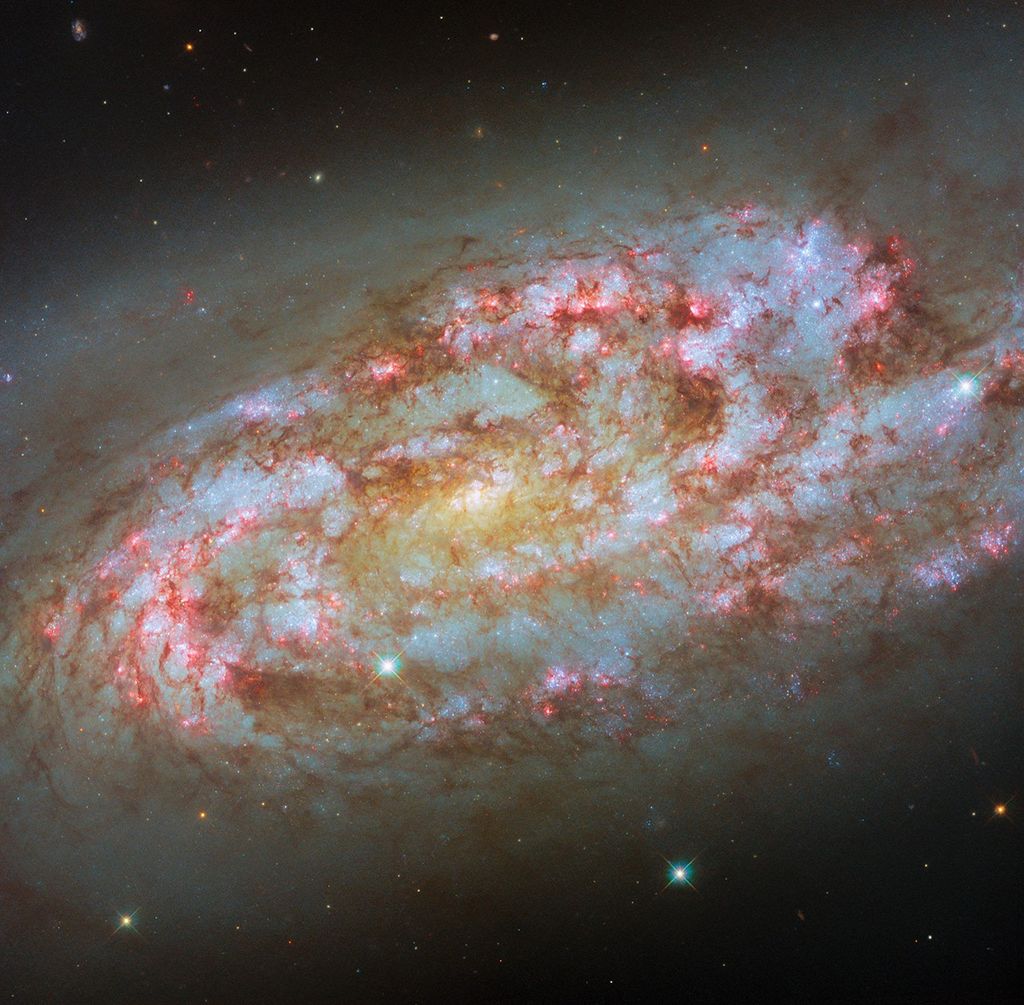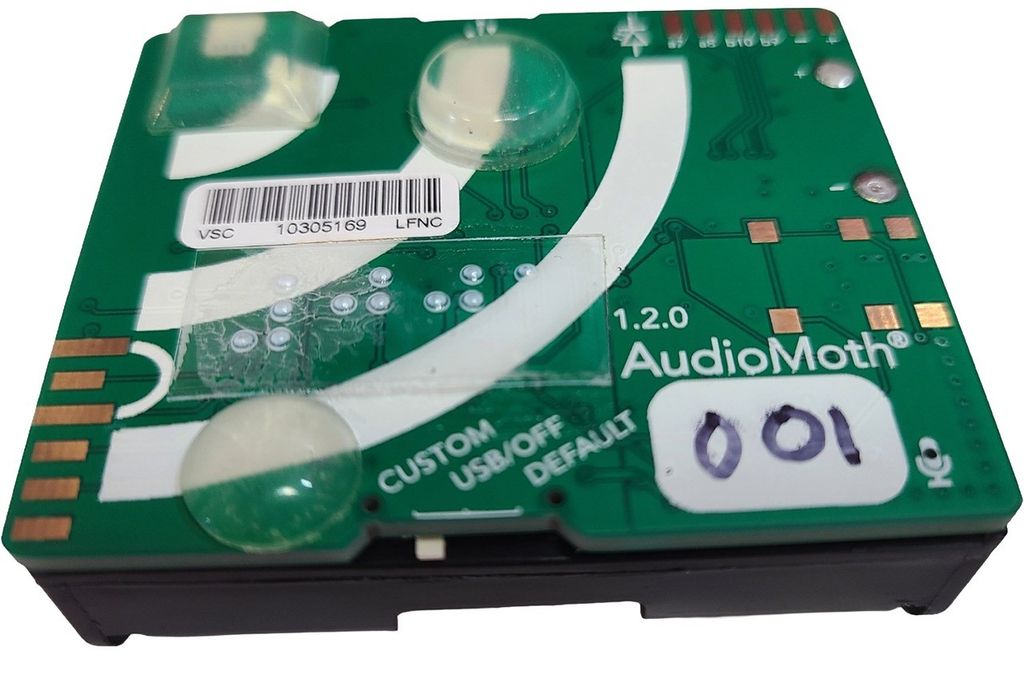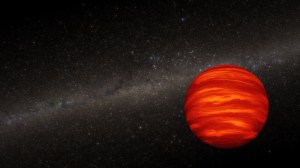
hubble-brown-dwarf-illustration-stsci-01hqtgma3t0e0fmag6kd1d053k
This is an artist's concept of a brown dwarf. This class of object is too large to be a planet (and did not form in the same way), but is too small to be a star because it cannot sustain nuclear fusion, since it is less massive than even the smallest stars. A brown dwarf is marked by wind-driven horizontal bands of thick clouds that may alternate with relatively cloud-free bands, giving the object a striped appearance. Whirling storm systems as big as terrestrial continents, or even small planets, might exist. The name "brown dwarf" is a misnomer because the object would typically appear red to the naked eye. It is brightest in infrared light. Many brown dwarfs have binary companions. But as they age, the binary system gravitationally falls apart, and each dwarf goes its separate way, according to a recent Hubble Space Telescope study. The background stars in this illustration are a science visualization assembled from the Gaia spacecraft star catalog. The synthesized stars are accurate in terms of position, brightness, and color. Because this is not an image of the Milky Way, missing are glowing nebulae and dark dust clouds.
- X






















